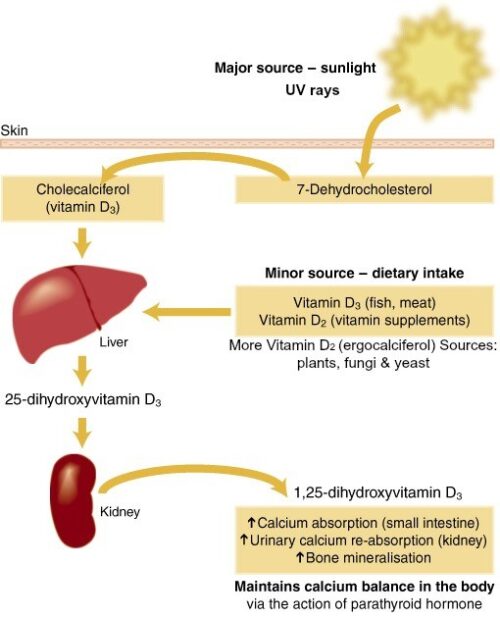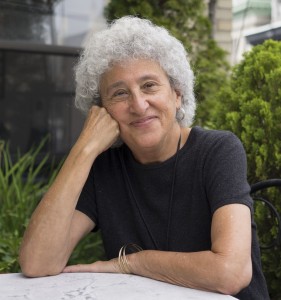Vitamin D for immunity? Additional info and a great graphic
Editor’s Note: Marion Nestle, Ph.D (molecular biology), and emeritus professor of nutrition at New York University writes one of my favorite blogs, “Food Politics.” In my recent column about immunity and vitamin D, I explained that it is necessary to obtain sufficient vitamin D from food and from sunshine — vitamin D is essential for a healthy immune system, especially important in this time of Covid-19. In her recent blog post, Dr. Nestle succinctly explains how the body manufactures vitamin D. Read her May 26 column, “Vitamin D and Coronavirus? Will it help?”
By Marion Nestle
I wrote about current research suggesting that higher levels of blood Vitamin D [actually, 25-hydroxycholecalciferol, or 25(OH)D] help to protect against Covid-19.
To understand concerns that this evidence may not be totally convincing, it’s useful to know the basics about this “vitamin,” which I put in quotes because its active form is a hormone that helps govern calcium balance. Here’s how it works.

- Sunlight acts on a form of cholesterol in skin (7-dehydrocholesterol) to covert it to cholecalciferol, the chemical name for vitamin D3.
- Vitamin D3 goes to the liver where an enzyme converts it to 25 (OH)D.
- 25(OH)D goes to the kidney where an enzyme converts it to 1,25-dihydroxycholecalciferol (a.k.a. 1,25-dihydroxyvitamin D), the active hormone.
If you eat foods containing vitamin D3 (fish and meat, which have it in very small amounts, or fortified milk) or vitamin D2 from plants, yeast, or supplements, these travel in the blood to the liver where they undergo the same metabolic steps.
This means that there are three sources.
- Sunlight on skin—this produces thousands of IU (International Units)
- Food—is low in this vitamin
- Supplements—vary, but high doses are not recommended by most health authorities; they may induce hyper-immune responses (not a good idea)
The commonly recommended daily dose of vitamin D is 400-600 IU.
Sunlight on skin is by far the best way to get your vitamin D hormone.
Sensible sun exposure, especially between the hours of 10:00 am and 3:00 pm produces vitamin D in the skin that may last twice as long in the blood compared with ingested vitamin D.If sun exposure produces slight pinkness, the amount of vitamin D produced in response to exposure of the full body is equivalent to ingesting 10,000-25,000 IU.
In the UK, a study showed that 13 minutes of midday sunlight exposure during summer, just three times per week, maintains healthy levels in white adults ; other studies have shown 30 minutes of midday summer sun exposure in Oslo to be equivalent to consuming 10,000–20,000 IU of vitamin D.
How does all this relate to Covid-19?
So far, we do not have studies of vitamin D supplements in patients with Covid-19 or longer term prospective trials. These will undoubtedly come.
While waiting for those results, enjoy the sunshine!
Marion Nestle is Paulette Goddard Professor, of Nutrition, Food Studies, and Public Health, Emerita, at New York University, which she chaired from 1988-2003 and from which she officially retired in September 2017.

Credit: Bill Haye
She is also Visiting Professor of Nutritional Sciences at Cornell. She earned a Ph.D. in molecular biology and an M.P.H. in public health nutrition from the University of California, Berkeley, and has been awarded honorary degrees from Transylvania University in Kentucky (2012) and from the City University of New York’s Macaulay Honors College (2016).
_________________________
Credit: FoodPolitics.com




















